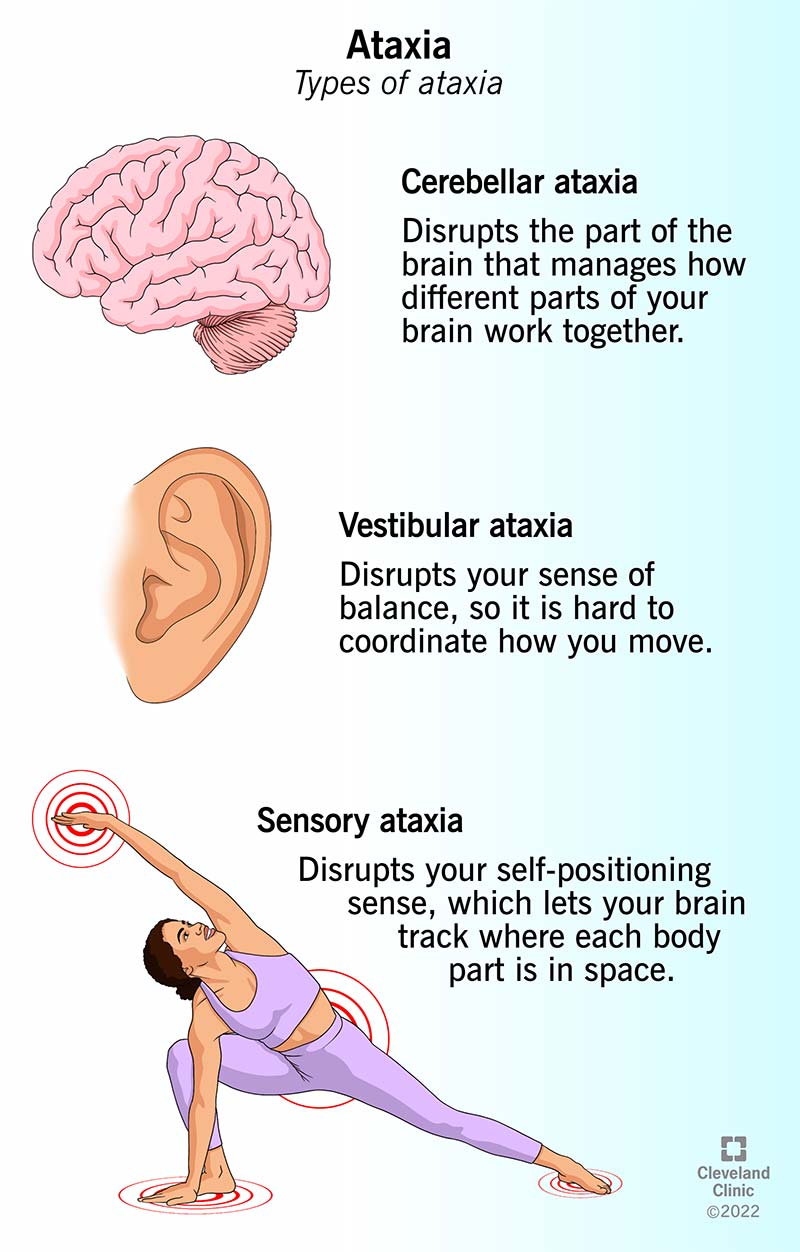Ataxia: Causes, Symptoms, and Treatment Options Explained
What is Ataxia?
What is Ataxia?
Ataxia is a neural disorder characterized by severe coordination, balance, and walking difficulties due to progressive degeneration of specific areas of the brain and nervous system. Imagine being unable to walk, speak, or even feed yourself without the slightest risk of accidental injury or strain due to lack of fine motor control. Ataxia can encompass numerous clinical signs and symptoms, with varying degrees of impact on the affected individual’s quality of life. This disorder often arises from degeneration within the cerebellum or cerebellar connections in the brain or damage from a stroke or long-standing disorders characterized by dystonia. Symptoms of ataxia typically manifest early in life, but they can vary widely based on genetic inheritance.

Expanded Overview and History
Ataxia, a complex neurodegenerative disorder, impedes coordination, balance, and movement, affecting both adult and pediatric populations. Historical understanding of ataxia has evolved since 1899, with significant advances highlighting its neurological roots. Numerous classification systems have emerged to categorize ataxias, many caused by genetic mutations affecting cognitive function. Increased awareness and understanding of the pathways involved in ataxia are paving the way for research into effective diagnostics and treatment interventions.
Related Concepts and Terms
To fully grasp Ataxia, it is crucial to comprehend the related concepts that contribute to the understanding of this neurological disorder, such as coordination, proprioception, and motor control systems. The cerebellum plays an essential role in maintaining balance, while disruptions in proprioception affect body awareness and movement coordination. Additionally, the complexities of neuroplasticity, epigenetics, and quality of life issues related to ataxia must be recognized for a comprehensive approach to treatment.
Examples in Practice and Case Studies
Understanding Ataxia through real-life case studies illustrates its varied impacts. For instance, Sarah, a 40-year-old with autosomal dominant cerebellar ataxia, shows how genetic testing can lead to better management of the condition. Similarly, John, diagnosed with Friedreich’s ataxia, highlights the importance of early diagnosis and intervention. These interactions underscore the need for compassionate care and innovative solutions to improve patients' lives.
Key Terms and Concepts
Ataxia encompasses numerous types, including Friedreich’s ataxia, spinocerebellar ataxia, and ataxia-telangiectasia, each with its unique challenges and management strategies. Symptoms may include gait disturbances, impaired balance, and coordination issues, intertwined with various complications and comorbidities like spasticity and cognitive impairment. Ongoing research into novel therapeutic strategies, including gene therapy and neuroplasticity, shows promise in improving outcomes for those affected by ataxia.
Types of Ataxia
Ataxia represents a range of disorders defined by loss of balance and coordination, with distinct types such as Friedreich’s ataxia, spinocerebellar ataxia, and episodic ataxia presenting unique challenges. Understanding the diversity of ataxia is key to tailoring effective treatment plans and engaging with healthcare providers efficiently. Individuals dealing with ataxia symptoms may find helpful tools through platforms like GoblinX, which offers anxious and ADHD support tools that may benefit those affected by Ataxia as well.